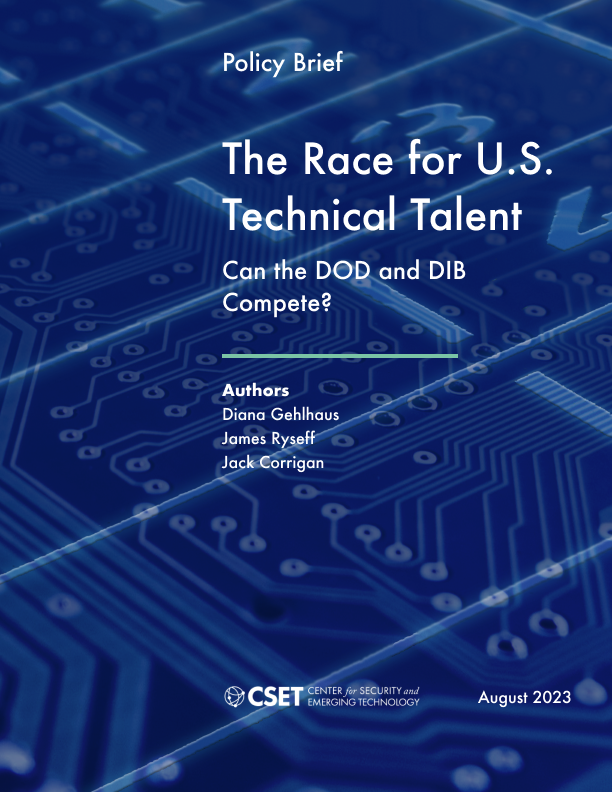Executive Summary
Technical talent—individuals in computer and mathematical occupations who make up a large share of the AI workforce—is essential to U.S. innovation and growth. The mobility of this talent is also essential, as the movement of technical talent promotes the diffusion of ideas, expands professional networks, and spurs the development of innovative products. Attracting these highly mobile tech workers is therefore critical to staying on the cutting edge of the technological frontier. This is especially true for the defense community, which needs ready access to cutting-edge technologies and the workers who can design, develop, and deploy them. In the years ahead, understanding how this human capital flows within and between industry sectors is critical for maintaining U.S. technological leadership.
Conventional wisdom holds that the Department of Defense (DOD) and the defense industrial base (DIB)—collectively referred to as the defense community—generally struggle to access the technical talent they need. Countless studies and media reports detail the deficit of technical talent within the defense community, and the numerous risks associated with this shortfall. At the same time, there is a prevailing narrative that this talent is becoming increasingly concentrated in the so-called Big Tech firms, defined here as Facebook (Meta), Apple, Amazon, Netflix, Google (Alphabet), and Microsoft. Even amid the recent layoffs across the industry, these firms maintain a reputation for hiring large quantities of top technologists. However, little evidence is available to put these claims in perspective.
Our analysis seeks to illuminate trends in tech talent migration between different industry sectors and major metro areas, with the goal of informing future workforce development efforts across the defense community and the United States more broadly. We use data provided by Revelio Labs; specifically, LinkedIn positions based in the United States with start dates between 1998 and 2021. Our analysis validates some of the conventional wisdom and illuminates three major trends across the defense community’s technical workforce:
- The defense community is not replacing or expanding its technical workforce at the same rate as other industry sectors. For example, while the share of incoming versus outgoing workers was relatively equal for most sectors from 1998 through 2021, more than 75 percent of technical talent flows were outgoing for the DOD.
- The defense community remains relatively isolated from other sectors in terms of talent cross-flow and geographic hubs, which can slow technology adoption. Additionally, tenures in the defense community tend to be longer than other industry sectors, which may also limit mobility and the sharing of innovative ideas and techniques.
- The U.S. Department of Defense recruits a relatively small share of its technical workforce from top-ranked computer science schools, an imperfect but commonly used proxy for quality. Roughly 20 percent of the tech workers in the DOD between 1998 and 2021 held degrees from “ranked” universities, compared to more than 60 percent in the Big Tech firms.
While none of these trends are necessarily problems in and of themselves, when taken together they can result in an environment that is not adequately equipped to recruit and retain talent, drive innovation, and adopt emerging technologies across the enterprise. We propose four recommendations for how the defense community can begin addressing these challenges and better access technical talent:
- Collaborate and partner as needed with the commercial software sector, promoting sectoral crossover and industry exchanges.
- Invest in the human capital of the existing talent pool.
- Investigate how to encourage the DOD and the DIB to become more integrated with the larger U.S. technical workforce.
- Cultivate a future civil-service-minded technical workforce.
Ultimately, the defense community has a sizable cadre of technical talent that must be appropriately identified and leveraged. Moreover, and equally important, the defense community has a critical role in growing and diversifying the domestic pipelines for future technical talent. Embracing both realities will go a long way to not only ensuring the DOD’s access to sufficient technical talent, but to positioning the United States for future global workforce competitiveness.
